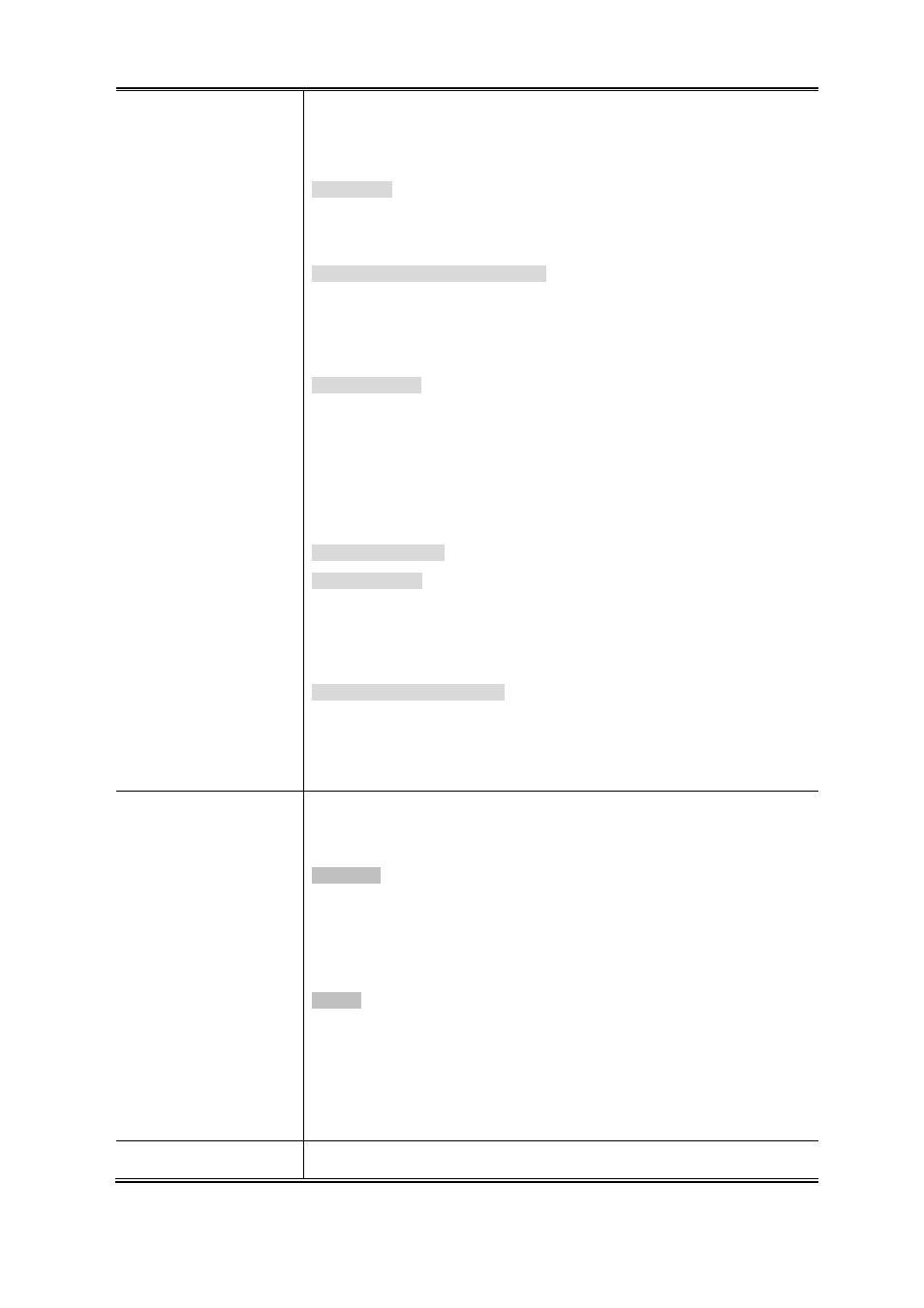PLANET IGS-10020HPT User Manual
Page 314

User’s Manual of IGS-10020HPT
different policy for the voice signaling than for the voice media. This application
type should not be advertised if all the same network policies apply as those
advertised in the Voice application policy.
Guest Voice
- support a separate 'limited feature-set' voice service for guest
users and visitors with their own IP Telephony handsets and other similar
appliances supporting interactive voice services.
Guest Voice Signaling (conditional)
- for use in network topologies that require
a different policy for the guest voice signaling than for the guest voice media.
This application type should not be advertised if all the same network policies
apply as those advertised in the Guest Voice application policy.
Softphone Voice
- for use by softphone applications on typical data centric
devices, such as PCs or laptops. This class of endpoints frequently does not
support multiple VLANs, if at all, and are typically configured to use an 'untagged’
VLAN or a single 'tagged’ data specific VLAN. When a network policy is defined
for use with an 'untagged’ VLAN (see Tagged flag below), then the L2 priority
field is ignored and only the DSCP value has relevance.
Video Conferencing
Streaming Video
- for use by broadcast or multicast based video content
distribution and other similar applications supporting streaming video services
that require specific network policy treatment. Video applications relying on TCP
with buffering would not be an intended use of this application type.
Video Signaling (conditional)
- for use in network topologies that require a
separate policy for the video signaling than for the video media. This application
type should not be advertised if all the same network policies apply as those
advertised in the Video Conferencing application policy.
Tag
Tag indicating whether the specified application type is using a 'tagged’ or an
'untagged’ VLAN.
Untagged
indicates that the device is using an untagged frame format and as
such does not include a tag header as defined by IEEE 802.1Q-2003. In this
case, both the VLAN ID and the Layer 2 priority fields are ignored and only the
DSCP value has relevance.
Tagged
indicates that the device is using the IEEE 802.1Q tagged frame format,
and that both the VLAN ID and the Layer 2 priority values are being used, as well
as the DSCP value. The tagged format includes an additional field, known as the
tag header. The tagged frame format also includes priority tagged frames as
defined by IEEE 802.1Q-2003.
VLAN ID
VLAN identifier (VID) for the port as defined in IEEE 802.1Q-2003
314